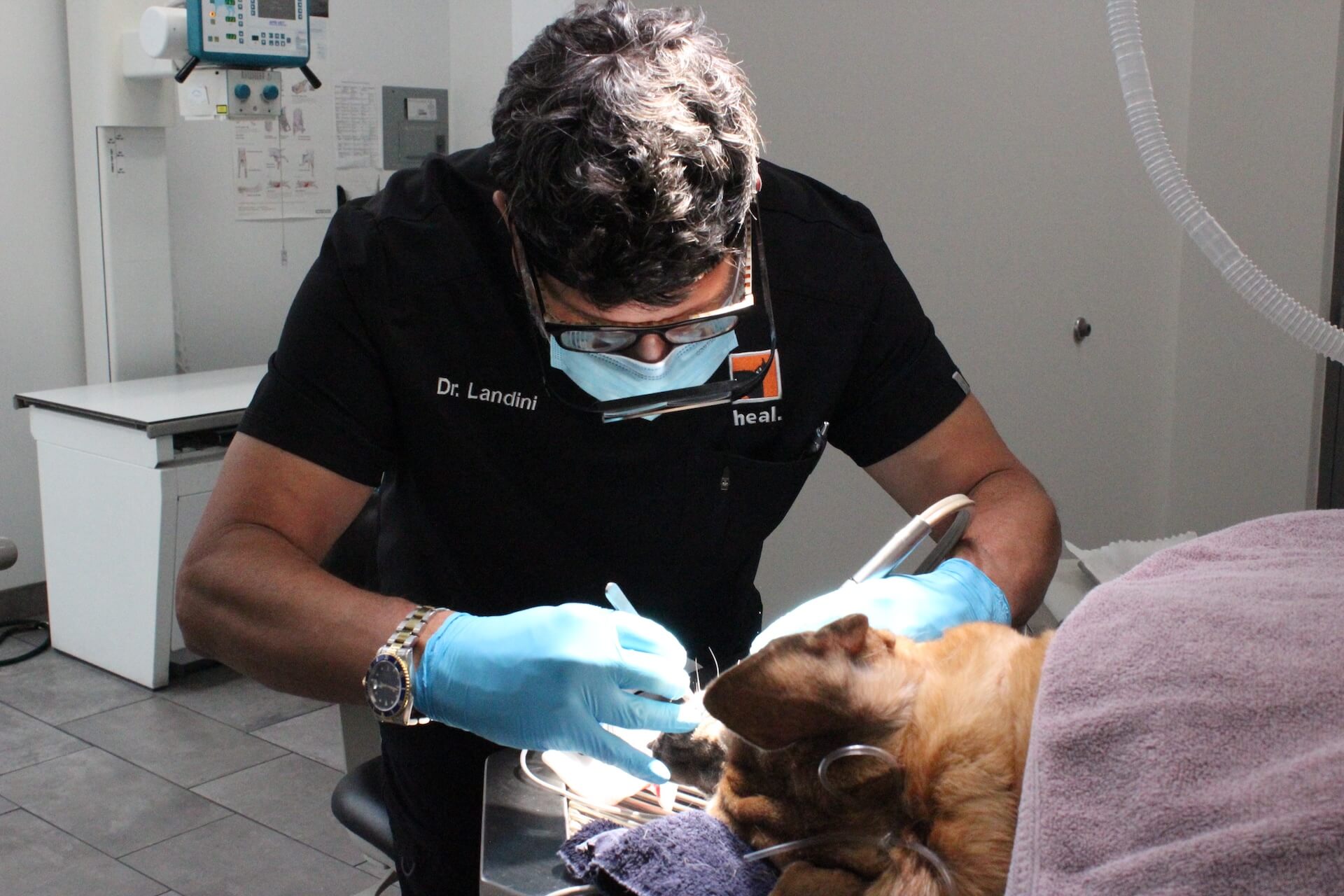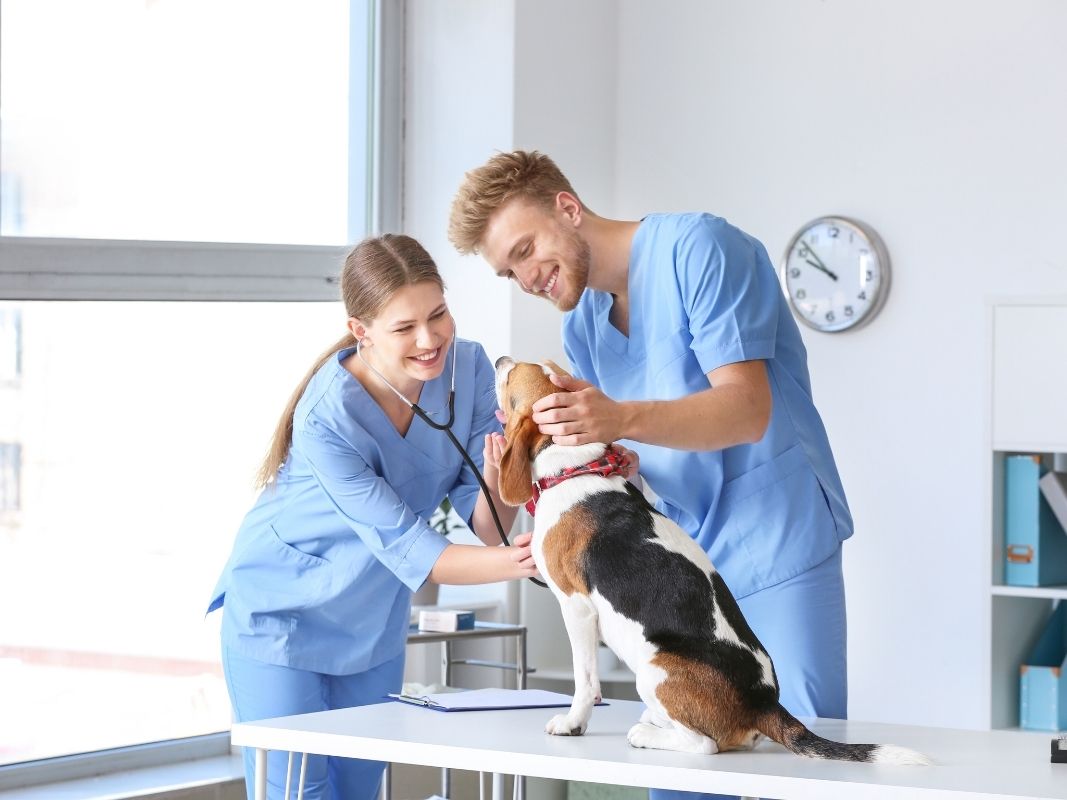How to Prepare Your Pet and Home for canine tplo surgery Recovery
Wiki Article
Why Animal Rehab Is Vital: the Conveniences of Vet Providers for Your Pet dog's Recovery
Pet recovery is a crucial part of recuperation for animals dealing with injuries or disabilities. Veterinary solutions offer essential support with tailored rehabilitation plans that attend to specific needs. These strategies typically include pain management, physical treatment, and dietary support. Recognizing the different facets of pet rehab can brighten its significance in enhancing healing outcomes. What certain advantages do these services supply, and exactly how can they transform a pet dog's healing trip?Comprehending Animal Recovery
Animal rehabilitation incorporates a variety of therapeutic practices targeted at restoring the wellness and functionality of damaged or handicapped pets. This area integrates various methods, consisting of physical treatment, hydrotherapy, and work treatment, tailored to satisfy the specific needs of each animal. Recovery professionals analyze a pet's problem, developing personalized treatment plans that might entail workouts to enhance muscles, enhance wheelchair, and boost overall health. The procedure not only concentrates on physical healing however also addresses psychological and behavior facets. Animals commonly experience anxiety and anxiousness following an injury, making mental wellness considerations crucial in recovery. By developing a supportive setting, specialists can aid animals reclaim their self-confidence and adapt to their brand-new circumstances. Via regular sessions, animals can experience significant improvements, inevitably resulting in a much better high quality of life. On the whole, comprehending animal rehab highlights its relevance in promoting healing and boosting the bond between pet dogs and their proprietors.
The Function of Discomfort Management in Healing
Exactly how important is reliable discomfort management in the recovery of injured pets? It plays a crucial duty in facilitating healing and improving the total well-being of animals. Correct discomfort management not just minimizes pain but also advertises flexibility, allowing pets to participate in rehabilitation tasks required for healing. When discomfort is properly handled, pets have a tendency to react favorably to treatment, causing quicker rehab outcomes.Veterinarians make use of different approaches to evaluate and address pain, consisting of drugs, acupuncture, and alternative treatments. By customizing discomfort administration methods to the private demands of each animal, vets can ensure that pet dogs remain calm and cooperative throughout their recuperation trip. Reducing discomfort aids minimize anxiety, which can inhibit healing and lengthen recuperation times. To sum up, efficient discomfort management is vital for improving the recuperation process and boosting the lifestyle for damaged animals.Physical Therapy Techniques for Pets
Many physical therapy methods are readily available to aid in the rehabilitation of pet dogs recovering from injuries or surgical procedures (tplo surgery). These strategies can boost mobility, relieve discomfort, and promote healing. Restorative exercises, for example, aid strengthen muscular tissues and enhance joint feature, enabling pets to restore their physical abilities slowly. Hand-operated treatment, which includes massage and mobilization, can relieve stress and improve circulation, adding to a quicker recovery.Other methods such as passive variety of movement exercises encourage joint flexibility and reduce tightness. In addition, electric excitement therapy might be used to promote nerves and muscles, advertising healing and discomfort relief.Veterinary experts commonly tailor these methods to each animal's specific needs, making certain a thorough rehab strategy. By carrying out these physical treatment methods, pet dogs can experience enhanced lifestyle and a much more effective recovery from their ailments. The integration of these methods into recovery programs is vital for suitable healing end resultsAdvantages of Hydrotherapy for Recovery
Hydrotherapy supplies substantial advantages in pet rehab, particularly in enhancing wheelchair. This water-based therapy advertises pain relief while providing comfort to harmed or recouping pet dogs. In addition, it promotes strength-building workouts that add to total physical recuperation.Improved Flexibility Improvement
As pets recoup from injuries or surgeries, boosted flexibility usually ends up being a key goal of their recovery. Hydrotherapy acts as a beneficial tool in attaining this goal. With water-based exercises, pets can take part in low-impact activities that promote joint movement and reinforce muscle mass without the stress and anxiety of weight-bearing activities. The buoyancy of water supports their bodies, enabling enhanced variety of movement and flexibility enhancement. Furthermore, hydrotherapy motivates much better balance and coordination, which are essential for recovering regular movement patterns. Normal sessions can result in considerable development in an animal's physical capabilities, eventually enhancing their high quality of life. This technique not only aids in recuperation yet likewise promotes an extra active and meeting way of living post-rehabilitation.Pain Alleviation and Convenience

Alleviation from discomfort is a crucial facet of animal rehab, and hydrotherapy greatly adds to this procedure. By using water's buoyancy, hydrotherapy lowers joint stress and anxiety and relieves discomfort throughout movement. This restorative strategy offers a soothing atmosphere where animals can engage in mild exercises without the complete weight of their bodies influencing their healing. The warm water promotes blood flow, advertising healing while additionally encouraging leisure. Furthermore, hydrotherapy sessions can be tailored to meet the certain needs of the animal, ensuring ideal convenience. As animals experience lowered discomfort and enhanced comfort degrees, their overall determination to join rehab activities commonly boosts, causing a more effective recovery trip. Consequently, hydrotherapy functions as an essential device in enhancing pain relief and comfort throughout recovery.
Stamina Building Workouts
Strength-building workouts play a necessary role in the rehab process, with hydrotherapy offering distinct benefits. This kind of treatment uses water resistance to boost muscular tissue toughness without placing excessive strain on the joints. The buoyancy of water supports the pet dog's weight, permitting for more secure motion and boosted variety of motion. Furthermore, hydrotherapy can improve cardiovascular wellness and promote general physical fitness, helping in quicker recuperation from injuries or surgeries. The regulated setting also decreases the risk of reinjury, making it an optimal alternative for animals needing rehabilitation. Routine hydrotherapy sessions can result in recognizable improvements in movement, stamina, and endurance, ultimately improving the pet dog's lifestyle and capacity to go back to regular activities.Importance of Custom-made Rehab Strategies
Customized rehabilitation strategies are important for dealing with the distinct demands of each pet, guaranteeing customized therapy strategies. These strategies permit reliable progression tracking and essential adjustments, fostering ideal recuperation outcomes. Furthermore, an all natural strategy can enhance the general health of the animal, promoting an extra thorough rehabilitation experience.Individualized Treatment Approaches
While many recovery programs adopt a one-size-fits-all technique, the special requirements of each animal demand personalized therapy strategies for optimal healing. Custom-made rehabilitation plans consider different variables, consisting of the animal's varieties, age, medical history, and particular injuries or problems. By customizing treatments, vets can resolve each pet's one-of-a-kind obstacles, maximizing the efficiency of the rehab procedure. Embellished plans may integrate different modalities such as physical therapy, hydrotherapy, and restorative workouts, ensuring that the treatment lines up with the pet's capacities and progression. In addition, customized techniques cultivate a stronger bond in between the pet and the caretaker, promoting a more engaging and supportive recuperation environment. Ultimately, customized therapy is essential for accomplishing ideal possible results in animal recovery.Development Monitoring and Adjustments

Holistic Recuperation Strategies
All natural healing techniques are vital for reliable pet rehabilitation, as they emphasize the significance of customized therapy plans tailored to every pet's details needs. This approach thinks about the physical, psychological, and ecological factors affecting healing. Custom-made rehab strategies might include a mix of physical treatment, nutritional counseling, and behavioral alterations. By resolving these diverse aspects, vets can boost the total wellness of the animal and advertise a much faster healing. Such customized techniques promote a much deeper understanding of the animal's distinct obstacles, leading to extra efficient interventions. Ultimately, holistic recuperation methods not only boost physical health yet additionally contribute to the pet's mental and emotional stability, ensuring a detailed rehab experience.The Influence of Nourishment on Recovery
Nutrition plays a vital function in the recuperation procedure for refurbishing animals, frequently identifying the speed and effectiveness of recovery. A well-balanced diet plan gives the essential nutrients that support tissue repair service, improve the body immune system, and improve general vigor. Protein is especially vital, as it aids in muscular tissue rebuilding and healing from injuries. Crucial fatty acids, vitamins, and minerals also add to reducing inflammation and advertising ideal mobile function.Veterinarians often highlight the importance of customized nutrition plans, considering each animal's certain needs, age, and health status. Appropriate hydration is similarly essential, as fluids help with vitamins and mineral absorption and aid in cleansing. By guaranteeing that animals obtain appropriate nutrition, caretakers can significantly boost their chances of an effective healing, resulting in far better long-term health and wellness outcomes. the animal clinic Eventually, nourishment functions as a fundamental element in the rehabilitation trip, supporting animals in reclaiming strength and resilience post-injury or health problem.Success Stories: Pet Dogs That Flourished After Rehab
Effective rehab tales abound, showcasing the durability of pet dogs who have gotten rid of considerable difficulties. Take, as an example, Bella, a golden retriever that experienced severe injuries from a car crash. With committed veterinary treatment and an extensive recovery program, she regained her flexibility and returned to her playful self, much to her owner's delight. In a similar way, Max, an elderly pet cat detected with arthritis, experienced exceptional renovation with a mix of physical therapy and pain monitoring. His newfound agility enabled him to appreciate his favored sunbathing spots again. One more motivating case is that of Coco, a saved greyhound that overcame stress and anxiety through therapy veterinary emergency hospital and socialization strategies, enabling her to prosper in her new home. These success stories exemplify the transformative power of animal rehab, highlighting that with the best support, animals can not only recoup but lead fulfilling lives, enriching the bonds they share with their families.Regularly Asked Concerns
For how long Does the Rehabilitation Refine Generally Consider Pet Dogs?
The rehab process for pet dogs typically varies based upon the injury or condition, ranging from a couple of weeks to several months. Specific development, treatment type, and commitment to exercises greatly affect the total period of recuperation.Are There Any Threats Connected With Pet Recovery?
Animal recovery may lug risks such as worsening of injuries, inappropriate methods resulting in pain, or inadequate tracking throughout recovery. These aspects can impede progress and influence the general effectiveness of the recovery procedure.
Can All Pets Gain From Rehab Providers?
Not all pet dogs might need rehab, yet numerous can benefit greatly. Recovery solutions can enhance flexibility, alleviate discomfort, and enhance total wellness, specifically for those recuperating from injuries, surgeries, or persistent conditions.Just How Can I Prepare My Family Pet for Recovery Procedure?

What Indications Show My Animal Requirements Recovery?
Indications indicating a family pet might require rehabilitation consist of problem strolling, limping, reduced task degrees, unwillingness to jump, or indications of discomfort. Observing these actions can prompt proprietors to look for professional evaluation and treatment for their pet dogs.Report this wiki page